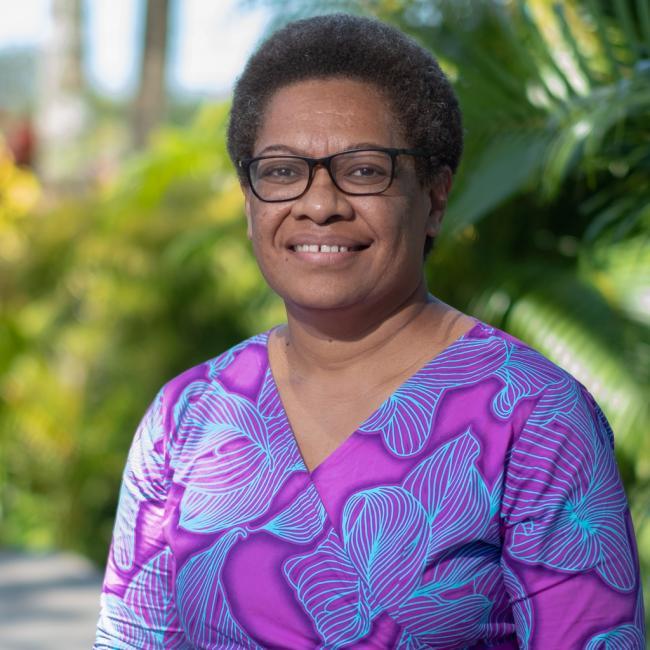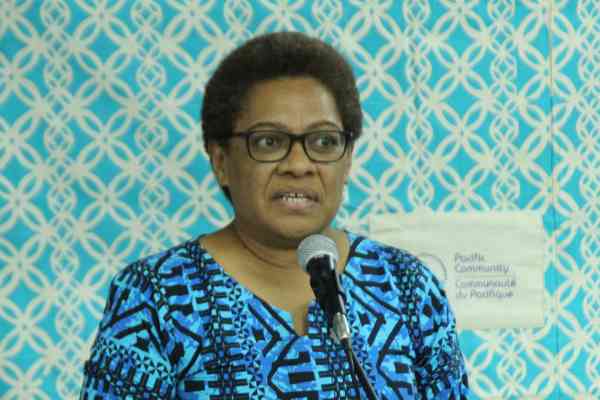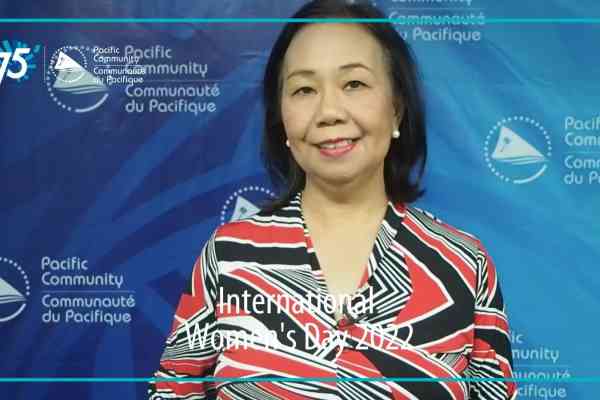Like the rest of the world, our Blue Pacific Continent is facing major global challenges that are transnational in nature demanding multi-faceted solutions.
The opportunity we have as the Pacific is unique and special. In the recent meeting of Pacific Leaders in July 2022, the 2050 Strategy for the Blue Pacific Continent was launched which provides a long-term vision and a strategy which reinforces commitment and working together as a collective for advancing Pacific regionalism. A pillar of this Strategy focuses on economic growth.
Economic growth is central to addressing the key issues which face us as a region….. climate change, inequalities, humanitarian emergencies, rising food/water/energy prices, resource depletion, security, and changing disease patterns, to name a few.
We know that 45% of our region lack access to basic drinking water and 64% still lack access to regular power supply. The human cost to ensure families have the necessary access to these amenities predominantly fall on our women, girls and children to bear. We know that women’s labour force participation is generally low across the Pacific. We also know that working women spend 90% of their income on their families compared with men’s 35%.
To unleash the full potential of our economies, we need to unleash the economic power of Pacific women. To reach our targets, we will need to harness all the capacities, the ingenuity and the drive that we have as a collective – and this means harnessing the largely untapped resource that vests in women.
In recent decades, we have seen remarkable progress on women’s rights. But these gains are far from consistent. At present trends, it will take 169 years to close the gap in women’s economic empowerment – a gap that is widening, not closing, by the day. The longer we put off women’s economic empowerment, the more we lose.
To me, a powerful lever for change, women’s economic empowerment can drive gender equality and broader intergenerational benefits for women, their families, communities, and nations. Women’s economic empowerment and financial inclusion have been recognized as key to achieving the 2030 agenda for Sustainable Development. Indeed, if women had the same lifetime earnings as men, global wealth could increase by $160 trillion—an average of $23,620 per person—in 141 countries studied by the World Bank.
But what does it take to realize this in Pacific communities? Is the current focus on improving women’s access to financial products and services sufficient? Is the answer the ability to open a bank account or receive credit or earning as much as a male colleague? Is the answer equal access to technology and innovation? Or is it about access to adequate social protection and sharing the burden of unpaid work like childcare?
No single fix will erase the entrenched and often unconscious systems of gender bias in our societies; there must be many fixes, tailored to the specific conditions that prevail in each country and each region. This involves looking beyond simply the gaps in services and products available to serve women, to focus on the formal and informal rules, cultures and norms that structure the power relations between women, men, and institutions in that environment.
The 2023 World Economic Forum Gender Gap Index indicates that for the 146 countries covered, the Health and Survival gender gap has closed by 96%, the Educational Attainment gap by 95.2%, Economic Participation and Opportunity gap by 60.1%, and Political Empowerment gap by 22.1%. Whilst the Health and Survival, Educational and Political Empowerment indices improved between 2022 and 2023, the Economic Participation and Opportunity index regressed for the same period.
Now, if we are doing so well universally in the education and health dimensions – shouldn’t that directly translate to greater economic participation and opportunity? Unfortunately, it does not! Laws, institutional structures, economic and fiscal policies and social norms are some pillars that we must look to if we are to enhance women’s economic empowerment.
I want to touch on one which encapsulates my first key message today:
The economic participation of women does not exist in a silo and in a similar vein – it must not be treated as such. To be effective, investing in women must take an approach that encompasses a holistic understanding of the myriad barriers women can often encounter in their lifetime. This can vary from gender-based violence to the woman’s role in the care economy. Statistics tell us that 2 out of 3 pacific women would have suffered some form of intimate partner violence in their lifetime, double the global average.
As a response, this may mean making intentional targeted interventions to change organisational culture at the workplace; to strengthen accountability mechanisms, policies and procedures that not only support women’s career progression but also creates a culture in which male and female employees can equally thrive; a culture that recognises and accommodates, in particular, the multi-dimensional forms of discrimination that defines the lived realities of women and girls within and outside of the workplace. If we fail to do this, then our investment in women’s economic empowerment will not achieve the intended outcome.
A response can be as simple as developing a domestic violence policy in a workplace to address the impact of domestic violence on employees. It can also be a financial investment for a childcare facility at a workplace that enables the full participation of women in industry, who carry the heaviest burden in the care economy.
My second message:
When it comes to investing in women or economically empowering women, one needs to pay attention to the social fabric of the environment in which women live. As an indigenous woman, culture and traditions lie central to my identity and my sense of being. It influences my worldview about everything that touches my life. As a girl child, I grew up in a remote coastal village accessible only by boat. Education introduced me to urban life and brought me to your shores but the earliest teachings of my parents, grandparents, the wisdom of folklore passed from generation to generation emphasising on the importance of culture and traditions, now intertwined with education and filtered through gender lenses, largely inform my approach in leveraging gender equality efforts in the pacific region.
When it comes to Fijian rural women for example, community is key. How can we design investment packages that are targeted at the woman as a critical member of a community; recognising that her sense of wellbeing is largely premised on this communal net. Programs focused on the individual may not always be the best approach and exclusion of men and boys may in fact be detrimental. Our commitment to genuine gender equality, should allow the woman to do whatever she chooses to do with this. In such a scenario and the sustainability of programs may require a community-focused mechanism instead, like a co-operative business model that is premised on community and which exists in for example the Fijian traditional system of solesolevaki. Initiatives aimed at economic empowerment of women must be contextualised to their lived realities on the ground and designed with these communities rather than in global boardrooms or in SDG discussions.
To me, reflecting on and looking at empowerment in this way urges us to pay more attention to what can be learnt from the everyday experiences of those whom development and initiatives seek to ’empower’ and to the pathways of empowerment that women are already taking for themselves.
Our goal should be, to make these pathways visible and to learn from women’s lived experiences. A pathway that is rooted in the perspectives of women and aims to learn from their daily struggles to make money, to navigate abusive relationships, to protect and care for their children and families and to influence the decisions, social norms and institutions that affect and restrict their lives.
Pacific cultures are diverse. We have three sub-regions that are contextually very different from each other and also diverse internally as well. If investing in pacific women is to be effective and sustainable, we need to spend time in understanding the nuances of the cultures and traditional governance systems that shape their lived reality and work with the right partners to do this in appropriate ways such as regional organisations and local institutions.
My third message:
Strategies for women’s economic empowerment must encompass new markets and test new methodologies. Gender Mainstreaming and gender responsive budgeting can be game changers for women’s economic empowerment in the Pacific but is still extremely underutilised. I must commend the Government of Australia for your International Development Policy and the mandate it sets for gender equality in development investments.
A lot of investment into the Pacific right now is targeted at mitigating or addressing the impact of climate change on our island states. Climate change poses the biggest single threat to the livelihoods of Pacific people. When talked about in the context of women and girls, the narrative is usually around the gendered impact of climate change and how women, girls and vulnerable groups suffer a disproportionate impact.
What we don’t talk about enough is how the ramifications of climate change and our collective response to it provides a unique opportunity for the economic empowerment of women. Take transition to clean renewable energy, for example. At the moment women comprise only 5% of employees in technical roles in pacific energy utilities, however, 64% of our population lack access to regular power supply with most relying on generators and fuel if their community have the necessary access to funding for these items.
The International Renewable Energy Agency or IRENA estimates that in order to meet Nationally Determined Contribution targets for renewable energy in Pacific Big Ocean States, a further investment of USD$5.9 billion will have to be made. How can we create pathways for women to economically benefit from that investment? How can we enhance the participation of women and girls in this largely male-dominated space? The time is now upon us to create a massive tide that women can ride on to partake in our transition to clean energy in the years that lie before us.
As a region we already have a blueprint on how we can make this happen. The Pacific Energy and Gender Strategic Action Plan or PEGSAP outlines our regional aspirations on how we can enhance the participation of women in the energy sector. We, at the Pacific Community or SPC are humbled to be given the privilege to manage this initiative on behalf of our members. It outlines interventions at four different levels: institutional, utilities, community and individual. What we need is investment for the implementation of the Action Plan and to realise our dream of bringing women into the economic pillar of the energy sector. We already have examples of the PEGSAP in action - I know of a group of women in the Pacific known as solar mamas. They have trained as solar engineers and have been given the responsibility to install and maintain village solar equipment. How can we use that as a platform for economic empowerment?
Women’s economic empowerment isn’t just about equality. It is about empowering families and communities; it is about the progress of societies; it is about sustainable development.
It is also about all of us putting what gender equality looks like for us to the side and listening to rural communities about the need for genuine, inclusive and holistic approaches that work to empower the woman in her context.
When we unlock the economic power of women, we are giving a booster shot to economic growth and in turn building resilient communities. Driving women’s economic empowerment must be a consistent effort to break down barriers, challenge stereotypes, create inclusive policies and understanding that the lived realities of women must always inform our interventions.
Thank you.


